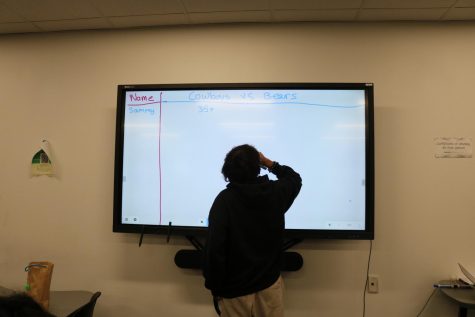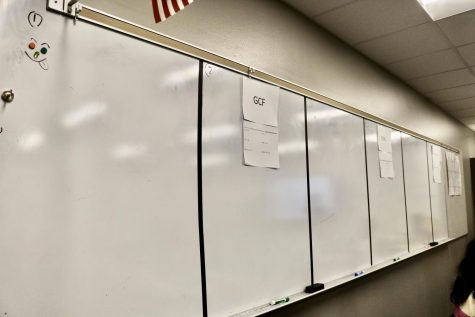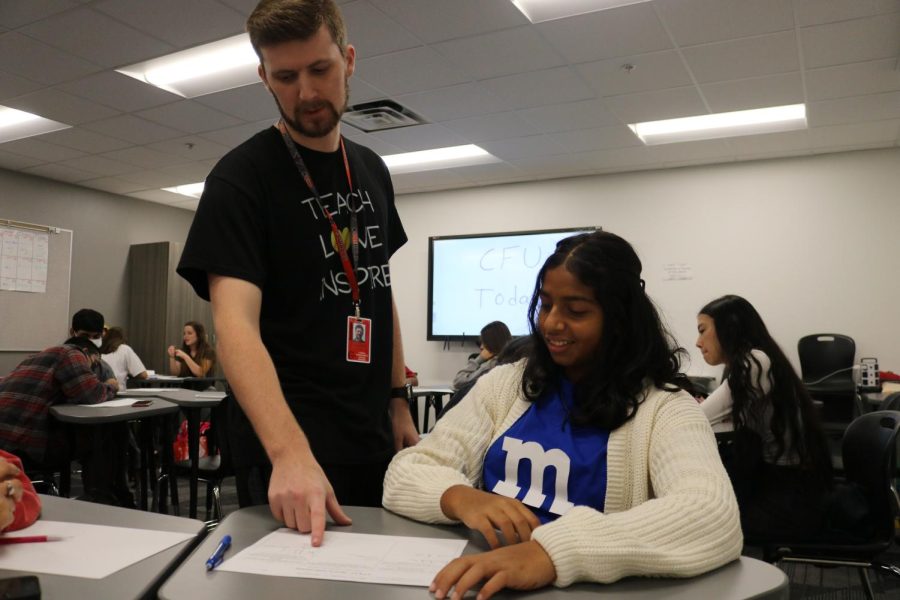Teacher of the Week: Smith’s creativity helps increase engagement in learning
Coppell High School Algebra II and Geometry teacher Philip Smith helps shopmore Laksita Yuvaraja with their weekly check for understanding (CFU). Smith uses student’s input to adjust his lesson plans, creating a more engaging learning environment.
November 16, 2022
Originally from California, Coppell High School Algebra II and Geometry teacher Philip Smith moved to Coppell at age 9 and graduated from CHS in 2014. During his high school career, he did JV track, football, and basketball, as well as leadership at the STEM Academy, one of the numerous career academies that CHS used to offer along with PSA Academy, Public Service Academy, and EMAC Academy.
As a teacher, he loves having real conversations with his students, allowing them to bond and connect with him helps his students understand the given material better as they trust him to teach it more efficiently. Additionally, he uses his students’ feedback to improve his teaching methods and adjust to how they would like to be teached.

What made you want to become a teacher?
It was a combination of things. I didn’t really have a moment where I was like, “boom I’m going to be a teacher.” What really sparked it all was my senior year [of high school], I had two teachers who were amazing. I was home-bound because I was injured and I would only come on Tuesdays for my [leadership organization] and the two teachers who sponsored [that program] were the ones who really impacted me. Because of their impact and how much of a great time I had in high school, and that I wanted to influence students, I decided to pick teaching.
What inspires you most as a teacher?
The fact that I get to have unique conversations with students everyday. I like math, if I was teaching something I didn’t like I wouldn’t teach [and] trying new things every year. This year I’m trying the whole whiteboard thing, getting up and moving around a lot more. As a teacher I like to try new things that spark my interest, I don’t like to stay stagnant.

What are some things you do that you think help your students?
It starts, believe it or not, with having the students realize that I am trustworthy, I know what I’m doing. On top of that, it also starts with a positive environment [and] positive relationships with all of my students. I’ve had teachers I do not vibe with, I do not like, and right away I don’t understand the concept as good because I’m not paying attention to them. And knowing my content very well, inside and backwards. I can come up with problems on the spot. I don’t have to have something prepared beforehand. It’s just [about] being creative, being able to try new things and fail and trying new things again to create something my students could understand.
What is one piece of advice you would give to other teachers?
Student input should be valued. Working from behind the scenes, there are teachers who do not value students’ input. They just care that it’s their way and the students are [going to] have to adjust to how they do it. [In the beginning of the school year], I was gaining input about how [my students] would want to be assessed, etc. I would have one-on-one interviews, asking my students whether or not they liked certain activities I do. I’m gaining input constantly and changing things based on what [they] say.










